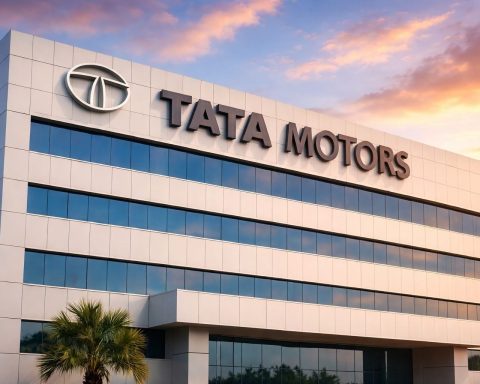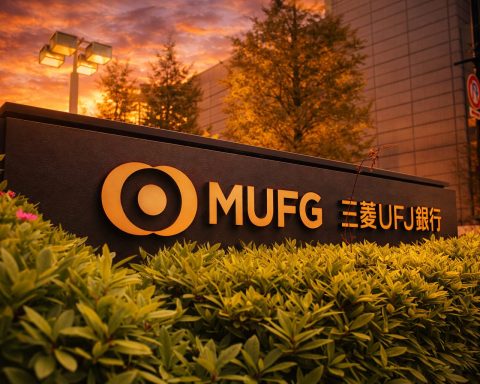- Massive Rally: D-Wave’s share price soared roughly 3,000% over the past year, briefly peaking at $46.75 on Oct. 15, 2025 [1]. After a mid-October selloff, QBTS remains up about 300% year-to-date [2] [3].
- Recent Volatility: The stock plunged ~35% from its Oct. 15 high to around $27.30 by Oct. 22 [4] [5], then jumped ~16% on Oct. 23 when reports surfaced that the U.S. Commerce Dept. is negotiating equity-for-funding deals with quantum firms [6] [7]. On Oct. 23 close, QBTS traded near $31.06 [8], giving a market cap of about $10.6 billion [9]. Trading volumes have been extraordinary (often tens of millions of shares a day [10]), reflecting the stock’s speculative swings.
- Government Policy: Reports on Oct. 23 (Wall Street Journal/Reuters) that the Trump administration may take ~$10 million equity stakes in quantum startups (IonQ, Rigetti, D-Wave, etc.) in exchange for R&D grants sent all “pure-play” quantum stocks soaring [11] [12]. D-Wave jumped ~23% intraday on that news [13] [14]. The Commerce Dept. has not confirmed deals, but even rumors have electrified the sector.
- Partnerships & Milestones: D-Wave has booked real-world wins. In mid-Oct., it announced a €10 million sale of its new Advantage2 (5,000+ qubit) system to Switzerland’s Quantum Technology SA for Italy’s new “Q-Alliance” hub [15]. CEO Alan Baratz called this a “critical component” of Europe’s quantum development [16]. The company also began hands-on workshops at Italian universities to train quantum talent [17], and has launched pilot projects with VW, NASA and others (including cutting UK police dispatch times by ~50% in a trial [18]). Meanwhile, IonQ co-founded that same Q-Alliance consortium in Italy [19], and Rigetti remains in talks for U.S. funding [20].
- Financials & Valuation: D-Wave’s fundamentals are still modest. First-half 2025 revenue was only ~$18 million [21], with a GAAP loss of $167 million in Q2 [22]. Its recent $400M stock offering has fattened cash to about $800–820M [23]. But at current prices the stock trades at hundreds of times sales [24]. Analysts note the rally is largely momentum-driven [25]. Wall Street is split: Roth Capital (Suji Desilva) boosted its 12‑month target to $50 [26], while others (e.g. Benchmark) are far less optimistic. The consensus target (~mid-$20s) implies downside from current levels [27]. Pessimists warn QBTS is “extraordinarily rich” [28]; Jim Cramer even cautioned investors not to “be fooled” by the quantum hype [29]. TipRanks data show a unanimous “Strong Buy” consensus for D-Wave, IonQ and Rigetti, with some price targets still well above current prices [30].
Market Reaction & Stock Performance
D-Wave’s market performance has been nothing short of dramatic. After lingering near $1 in late 2024, QBTS exploded in 2025. By early October it had tripled on the year, and on Oct. 15 it briefly hit $46.75 – about a 30-fold jump from a year earlier [31] [32]. Technical indicators flagged the stock as “overbought” after that rally [33], and the subsequent selloff into Oct. 22 was swift: the stock fell about 35% from its high to close ~$27.30 on Oct. 22 [34] [35]. Traders cite profit-taking and a broad tech-sector wobble (fears of U.S. export curbs to China) as triggers [36]. The stock’s real-time wild swings are seen as emblematic of speculative euphoria [37].
As of Oct. 23 close, QBTS traded around $31.06 [38], roughly 13.8% above the prior day. In pre-market trading Oct. 24 it was around $33 (up +7% pre-open) [39]. This puts D-Wave’s market cap at roughly $10.6 billion [40] (indeed, major data sites list ~ $10.6B as of Oct 23). The trading volume has been huge (for example, ~112.7 million shares on Oct. 23 alone [41]), reflecting intense retail and institutional activity. By late October QBTS is still up on the order of 300% for the year [42]. Long-term momentum remains strong: over a 12-month span D-Wave shares have soared into the thousands of percent range [43], dwarfing most stocks (even peer IonQ’s ~269–412% gain and Rigetti’s multi-thousand-percent surge).
Government Stakes & Policy Drivers
A major catalyst has been government policy. Citing Wall Street Journal and Reuters reports, outlets note that the Trump administration’s Commerce Department is “treating commercial quantum computing as a strategic sector” [44] [45]. Under this plan, Deputy Commerce Sec. Paul Dabbar (a former quantum startup executive) is said to be negotiating with IonQ (NYSE:IONQ), Rigetti (NASDAQ:RGTI), D-Wave and others. Each firm would get roughly $10 million in federal R&D grants in exchange for equity shares or similar conditions [46] [47]. Such terms mirror the Intel/Chips Act deal (U.S. took 10% of Intel for $9B of funding) [48].
The mere rumor of these talks sent the quantum sector into a tailspin of volatility. After the Oct. 22 selloff, Oct. 23 trading saw massive rebounds: premarket movers included Rigetti (+15.6%), D-Wave (+16.3%), IonQ (+14.7%) [49]. One report noted D-Wave spiked +23% intraday on Thursday after the WSJ news [50]. Fast Company similarly tallied Thursday gains of D-Wave +13%, IonQ +12%, Rigetti +9% as of mid-morning [51] [52]. In short, “Quantum Four” names (including D-Wave) all leapt on the funding-for-equity speculation [53] [54]. The Commerce Dept. denied immediate confirmation, but strategists say this event underscores how “government investment has long been vital to maintaining America’s technological leadership” [55].
Rigetti’s CEO remarked, “We are continuously engaging with the U.S. government on funding opportunities that advance quantum computing…The same holds true for quantum computing today. If the U.S. does not lead in supporting these breakthroughs, others will—posing significant risks to our economic competitiveness and national security.” [56]. This sentiment is echoed by others: D-Wave’s VP of Government Affairs, Allison Schwartz, noted that D-Wave aims to deploy systems to solve federal challenges and give taxpayers “a return on investment” [57].
At the same time, the broader tech backdrop can move these stocks. For example, Google just announced its new 65-qubit “Willow” chip achieved a 13,000× speedup on a physics simulation (“first-ever verifiable quantum advantage”) [58]. That news validated the field and briefly helped sentiment; conversely, NVIDIA CEO Jensen Huang recently warned that truly “useful” quantum machines might still be decades away, which briefly sent quantum stocks tumbling 40% earlier in 2025 [59]. In sum, D-Wave is benefiting from both public-policy tailwinds and heavy media spotlight on quantum as a new tech race.
Partnerships, Products & Developments
Beyond policy buzz, D-Wave has been securing real-world commercial milestones. In mid-October it announced a €10 million sale of an Advantage2 system (with 4,400+ qubits) to Swiss Quantum Technology SA, to be installed at Italy’s new Q-Alliance hub [60]. (IonQ is also a founding member of that same consortium [61].) Baratz said this Italian deal is a “critical component” of Europe’s quantum development [62]. In Italy D-Wave has since run hands-on university workshops (aimed at making Italy “a global hub of quantum innovation” [63]). Earlier in 2025 D-Wave signed a memorandum to deploy an Advantage2 system at Yonsei University in South Korea [64] – its first presence in that region.
The company has multiple pilot projects worldwide. Press releases cite trials with Germany’s E.ON (energy grid optimization), Japan’s Nikon (optics manufacturing), and technology firms like NTT and Sharp [65]. In the U.S., D-Wave is working with Volkswagen, NASA and even the Air Force (via Rigetti hardware) on optimization use-cases. One highlighted project: a UK police dispatch system that cut emergency response times by roughly 50% using D-Wave’s hybrid solvers [66]. Baratz touts this as proof that “quantum computing…is beginning to show real-world potential” [67].
On the technology front, D-Wave’s Advantage2 (6th-gen) annealing system is now generally available. It boasts over 5,000 qubits and (on certain optimization benchmarks) up to 400× speed gains versus the previous model [68]. Unlike some rivals, D-Wave’s large machines are already sold into customer facilities and offered via its Leap cloud platform. In Q1–Q2 2025, a string of these deals – including a $15 M sale to Davidson Technologies and upgrades for Germany’s climate institute – helped drive Q1 revenues to ~$15 M (up 509% year-on-year) [69].
One notable corporate action: on Oct. 20 D-Wave announced it would forcibly redeem all ~5 million of its public warrants (issued in the SPAC merger) at $0.01 each [70]. This forces warrant holders to exercise or forfeit their right to buy stock at $11.50. While this simplifies D-Wave’s cap table, the plan was seen as somewhat dilutive, and the announcement knocked the stock down about 10% on Oct. 21 [71]. The redemption (expected mid-November) will reduce potential future dilution from the warrant overhang.
Expert Views & Analyst Forecasts
Wall Street is polarized on D-Wave. Bullish analysts treat it as a first-mover: for example, Roth Capital (Suji Desilva) recently lifted its target to $50 (nearly +60% above recent prices) [72], and B. Riley’s Craig Ellis raised his to $33 [73], citing growing commercial traction. By contrast, other analysts have targets in the low $20s [74] (well below the stock’s current range). In aggregate, TipRanks shows consensus targets around the mid-$20s [75] [76].
An October 2025 survey of broker forecasts (via Stockanalysis) finds targets all over the map: Cantor at $60, Needham $80, Benchmark $75, B. Riley $100 for IonQ [77]; for D-Wave, Roth $50 and Benchmark $50 [78]; for Rigetti, Benchmark $50 and Ascendiant (QCI) $40 [79]. These imply anywhere from modest upside to stock-splitting-level gains (e.g. IonQ’s $100 target was ~+59% at the time [80]). Even so, seasoned commentators are cautious. The Motley Fool warned that today’s quantum darlings “may have bitten off more than they can chew” and cautioned that bubbles in speculative tech eventually pop [81]. Retail sentiment (via forums and social media) remains feverish: some investors see even brighter moves ahead, fueled by momentum and the promise of “another Nvidia-style boom.”
Of course, quantum computing is still early-stage. D-Wave’s CEO Alan Baratz has long argued that quantum annealing solves important optimization problems faster than classical methods. He predicts “quantum optimization will emerge as the killer use case for quantum computing” and that 2025 will see many real-world applications move into production [82]. In his view, annealing machines (like D-Wave’s) are already deployment-ready, whereas many gate-model systems are still years from practical use [83]. Such industry insiders view D-Wave’s recent deals (Italy, police, etc.) as proof that hybrid quantum systems can deliver faster, more efficient outcomes in specific domains [84] [85].
However, outsiders advise skepticism. Jim Cramer reminded investors not to “be fooled” by short-term quantum hype and suggested taking profits on rallies [86]. TipRanks and Weiss Research both warn of potential “sharp swings” and overvaluation [87]. The market will watch closely whether D-Wave’s actual sales and revenue can catch up to its surging stock price.
A Quantum Industry Boom
D-Wave’s frenzy is part of a broader “Quantum Gold Rush.” All the public pure-plays – IonQ (trapped-ion systems) and Rigetti (superconducting qubits) – have posted huge gains this year. After Oct. 23, IonQ was trading in the high-$60s (briefly touching the low-$70s) [88], up roughly 269–412% year-on-year [89]. Rigetti’s shares (pre-SPAC in 2022) bounced from under $1 to the mid-$20s by mid-October [90], an astonishing ~4,800% one-year gain. Even Quantum Computing Inc. (NASDAQ: QUBT) has surged over 1,000% in the past year [91]. These moves have made all three companies multibillion-dollar businesses: IonQ’s market cap is now in the high teens ($17–20B), and Rigetti around $12B (according to financial sites), dwarfing where they were a year ago.
Notably, companies that led quantum funding (cloud giants like AWS, Microsoft and Google) are also stepping on the accelerator. For example, IonQ’s partnerships (AWS, Microsoft) and press attention have helped it stay a sector leader. In Asia and Europe, governments are likewise investing. China is accelerating its quantum programs, while Europe’s new Q-Alliance (launched by Italy with IonQ and D-Wave as founders) has drawn a $100M commitment [92]. One analyst observed that “having the federal government as a shareholder is now becoming the new normal in tech policy” [93].
Outlook: For investors, the immediate question is whether D-Wave and peers can sustain the momentum. A closed government deal (even a small equity stake) could lend more credibility and cash, potentially supporting higher valuations [94] [95]. On the other hand, any limits on overseas sales or onerous terms could crimp growth. In the short term, the sector remains headline news – quantum is suddenly a household word – and brokers largely expect the run to continue into 2026. But everyone concedes this remains a high-risk, high-reward space. As one strategist put it, quantum is now at the center of a national-security race, and “even with previous gains of 400–4,900%, some analysts believe these stocks are just getting started.” [96] (Whether that proves true will depend on concrete contracts and real revenues ahead.)
Sources: Company press releases, Wall Street Journal/Reuters reports (via TechStock²) [97] [98]; Market data and chart services [99] [100]; TS2.Tech analysis [101] [102] [103]; Fast Company and Business Insider [104] [105]; quotes from D-Wave and IonQ executives [106] [107]; market commentary (TipRanks, Benzinga, Motley Fool, etc.) [108] [109]. All prices as of Oct. 22–24, 2025.
References
1. ts2.tech, 2. ts2.tech, 3. ts2.tech, 4. ts2.tech, 5. ts2.tech, 6. ts2.tech, 7. ts2.tech, 8. stockanalysis.com, 9. companiesmarketcap.com, 10. ts2.tech, 11. ts2.tech, 12. www.fastcompany.com, 13. www.businessinsider.com, 14. ts2.tech, 15. ts2.tech, 16. ts2.tech, 17. ts2.tech, 18. ts2.tech, 19. investors.ionq.com, 20. www.fastcompany.com, 21. ts2.tech, 22. ts2.tech, 23. ts2.tech, 24. ts2.tech, 25. ts2.tech, 26. ts2.tech, 27. ts2.tech, 28. ts2.tech, 29. ts2.tech, 30. ts2.tech, 31. ts2.tech, 32. ts2.tech, 33. ts2.tech, 34. ts2.tech, 35. ts2.tech, 36. ts2.tech, 37. ts2.tech, 38. stockanalysis.com, 39. stockanalysis.com, 40. companiesmarketcap.com, 41. stockanalysis.com, 42. ts2.tech, 43. www.fastcompany.com, 44. ts2.tech, 45. ts2.tech, 46. ts2.tech, 47. ts2.tech, 48. ts2.tech, 49. ts2.tech, 50. www.businessinsider.com, 51. www.fastcompany.com, 52. www.businessinsider.com, 53. www.fastcompany.com, 54. www.businessinsider.com, 55. www.fastcompany.com, 56. www.fastcompany.com, 57. ts2.tech, 58. ts2.tech, 59. ts2.tech, 60. ts2.tech, 61. investors.ionq.com, 62. ts2.tech, 63. ts2.tech, 64. ts2.tech, 65. ts2.tech, 66. ts2.tech, 67. ts2.tech, 68. ts2.tech, 69. ts2.tech, 70. ts2.tech, 71. ts2.tech, 72. ts2.tech, 73. ts2.tech, 74. ts2.tech, 75. ts2.tech, 76. ts2.tech, 77. ts2.tech, 78. ts2.tech, 79. ts2.tech, 80. ts2.tech, 81. ts2.tech, 82. thequantuminsider.com, 83. thequantuminsider.com, 84. ts2.tech, 85. thequantuminsider.com, 86. ts2.tech, 87. ts2.tech, 88. ts2.tech, 89. www.fastcompany.com, 90. ts2.tech, 91. www.fastcompany.com, 92. investors.ionq.com, 93. ts2.tech, 94. ts2.tech, 95. ts2.tech, 96. ts2.tech, 97. ts2.tech, 98. ts2.tech, 99. stockanalysis.com, 100. companiesmarketcap.com, 101. ts2.tech, 102. ts2.tech, 103. ts2.tech, 104. www.fastcompany.com, 105. www.businessinsider.com, 106. investors.ionq.com, 107. ts2.tech, 108. ts2.tech, 109. ts2.tech







